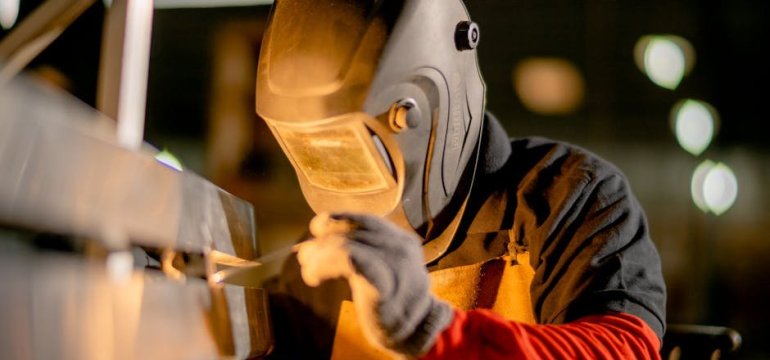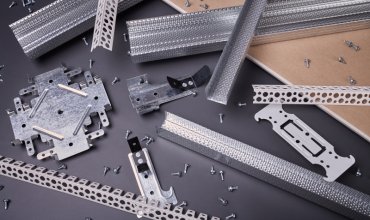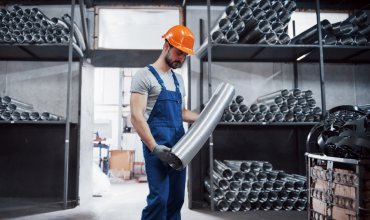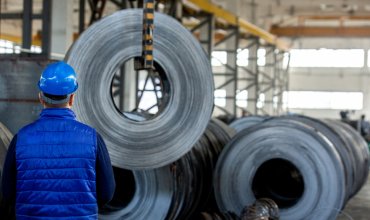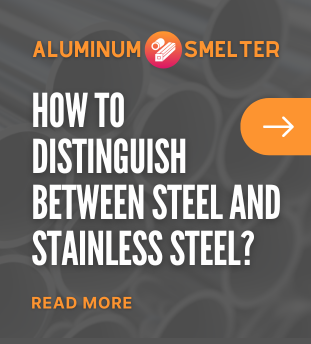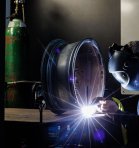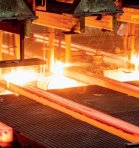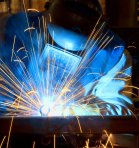Nowadays, with technology developing at a dizzying pace, the ability to perform metallurgical work is becoming extremely valuable. One of these skills that is highly regarded is TIG welding of aluminum. How to TIG weld aluminum is a question on the minds of beginners and advanced welders alike. In our practical guide, we will discuss how to approach this task step by step to achieve professional results.
TIG (Tungsten Inert Gas) aluminum welding is a process that requires precision, knowledge and the right equipment. It is not an easy task, but fully doable if you approach it with the right preparation and patience. First of all, remember that aluminum differs from other metals, such as steel, in terms of thermal and mechanical properties, which requires a special approach when welding.
TIG welding of aluminum: What is it and why is it important?
What is TIG welding?
TIG welding is a technique that allows various metals to be joined together using a non-fusible tungsten electrode and an inert gas shield. TIG is an abbreviation for Tungsten Inert Gas, which means that the electrode is made of tungsten and the process takes place in a gas shield, usually argon. With this method, accurate and clean welds can be achieved, which is invaluable when welding aluminum.
Why is aluminum welding unique?
Aluminum is a material with high thermal conductivity and specific properties. It melts at a lower temperature than steel, but its thermal conductivity is about five times higher, which makes the heat dissipate faster. Therefore, the welding process requires more focus on temperature control and technique. In addition, aluminum easily reacts with oxygen, forming a layer of aluminum oxide that must be removed before and during welding.
TIG welding of aluminum is highly valued in the aerospace and automotive industries, as well as in the manufacture of various structures and equipment, where high quality and accuracy of welding is required. It is a process that produces aesthetically pleasing and durable joints, which is crucial in many industries.
Choosing the right equipment for TIG welding of aluminum
TIG welder
The first step to successful aluminum welding is to choose the right welder. You should choose a TIG welder that offers features such as current control, AC/DC settings and current pulsing. Current adjustment allows you to fine-tune the welding parameters to the thickness of the material, while AC/DC (alternating current/direct current) settings are essential for welding aluminum, which requires alternating current.
The welder should also be equipped with a pulsing function, which helps control the amount of energy delivered and minimizes material overheating. This is especially important for thin aluminum sheets.
Tungsten electrodes
Tungsten electrodes are non-fusible and are used to generate the welding arc. When welding aluminum, it is recommended to use color-coded electrodes, such as green (pure tungsten) or gray (zirconium tungsten). The electrode should be properly blended to a conical shape to ensure a stable and concentrated welding arc.
Shielding gas
The most commonly used shielding gas is argon. Shielding gas protects the electrode and weld from contamination and oxidation. It can be used alone or mixed with other gases, such as helium, to increase weld penetration.
Welding additives
For aluminum, the use of appropriate welding wires or filler rods is key. Choose a filler material with a similar chemical composition to the aluminum being welded. Among the most commonly used are aluminum alloys with zinc, magnesium or silicon.
Preparation of the aluminum surface for welding
Mechanical and chemical cleaning
Before welding, the aluminum surface must be thoroughly cleaned to remove the oxide layer and other impurities. This can be done with a wire brush made of stainless steel, which is dedicated exclusively to aluminum. Using other tools can introduce impurities and weaken the quality of the weld.
It is also a good idea to use chemicals, such as specialized degreasers, which will help remove oils, grease and other organic residues. Before welding, the surface must be dry and clean.
Removing the oxide layer
Aluminum naturally forms a thin oxide layer that cannot be welded. This layer is hard and has a higher melting point than aluminum itself. Therefore, it is important to remove it before welding. This can be done using chemicals or electrochemical etching processes, which are commercially available.
Fitting the components
The next step is to carefully match the components. Uneven edges or loose connections can lead to poor quality welds and the formation of defects. Using the right assembly tools, such as clamps or welding fixtures, will help ensure stability and precision during welding.
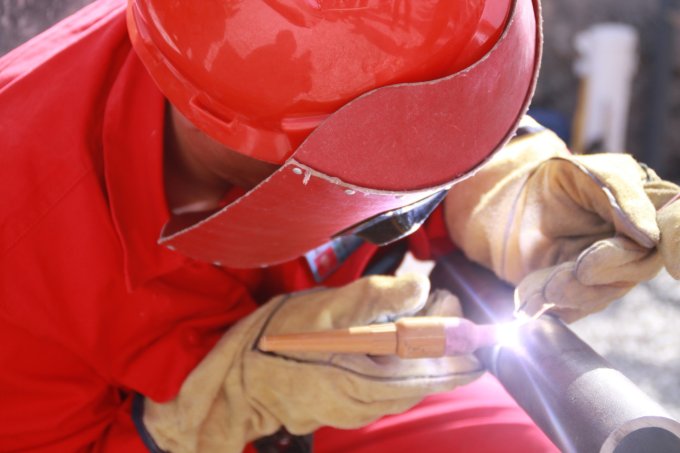
TIG welding techniques for aluminum
Current and voltage settings
When welding aluminum, it is recommended to use alternating current (AC). Alternating current helps remove the oxide layer from the metal surface during welding, which is crucial for a clean and strong weld. Attention should also be paid to the correct setting of the AC current frequency, which affects the stability of the arc and the shape of the weld.
The welding speed should be adjusted according to the thickness of the material. For thin sheets, use a lower current and higher welding speed to avoid overheating and burning through the material. Thicker materials, on the other hand, can be welded at a higher current and lower speed.
Electrode positioning
The electrode should be positioned at an angle of about 20-30 degrees to the weld surface. This angle provides better control over the crumb and allows better weld penetration. It is also important that the electrode is at the right distance from the material - too close can lead to the electrode sticking to the metal, and too far away can result in an unstable welding arc.
Filler wire feeding technique
The filler wire should be fed gradually and regularly to maintain an even and uniform weld. Avoid feeding the wire too quickly, which can lead to lumps and defects in the weld. Therefore, it is important to constantly control the amount of filler material fed.
Controlling the welding arc
The stability of the welding arc is crucial to achieving a good quality weld. In the case of aluminum, this is particularly difficult due to its high thermal conductivity. Using the pulsing function and adjusting the current parameters appropriately will help maintain a stable arc. Regular monitoring and adjustment of these parameters during welding is indispensable for obtaining uniform and strong welds.
Typical problems and solutions when TIG welding aluminum
Problems with the oxide layer
One of the most common problems that can be encountered when welding aluminum is the presence of an oxide layer. If the surface is not properly prepared, this layer can lead to pores and weakened welds. Regular cleaning of the surface and monitoring of the AC settings will help minimize this problem.
Overheating the material
Too high a temperature or too slow a welding speed can lead to overheating of the material, resulting in deformation and weakening of the weld. It is advisable to use appropriate welding current and speed parameters and to cool the material regularly, especially when welding for long periods. Pulsating techniques can also be used to help control the delivered energy.
Weld porosity
Weld porosity is another common problem that can result from impurities, inadequate shielding gas or poor welder settings. It is important to use the right shielding gas (preferably argon) and regularly check the gas lines for leaks. Maintaining cleanliness and sanitation is key to avoiding contamination.
Problems with the welding arc
An unstable welding arc can lead to poor quality welds and the formation of defects. To prevent this, regularly check the condition of the tungsten electrode, its positioning and current settings. Using the current pulsing function also helps maintain a stable arc.
Deformations and stresses
Aluminum is a heat-sensitive material, which can lead to deformations and stresses during welding. Using staged welding techniques, preheating the material or cooling between welding operations will help minimize deformations. It is also important to plan the welding sequence to distribute heat evenly throughout the structure.
Additional tips and practices when TIG welding aluminum
Using proper protection
When TIG welding aluminum, it is essential to use proper personal protection. Welding masks, heat-resistant gloves and protective clothing are essential to ensure the welder's safety. Non-toxic gases such as argon are used as a shield, but care must be taken to avoid inhaling welding fumes and vapors.
Practice makes perfect
TIG welding of aluminum requires precision, which cannot be learned overnight. Regular practice is key to mastering the technique. It is recommended to start by welding samples of the material before you start welding actual structures. By correctly mastering the basic techniques, you can avoid mistakes and defects.
Matching pairs?
Matching filler and base materials is key to achieving welds of adequate strength and quality. Before welding, make sure the materials are compatible in terms of chemical composition. In the case of aluminum, this is very important, as different alloys can have different mechanical and thermal properties.
Checking the quality of the welds
Once the welding is complete, the quality of the weld should be carefully checked. This can be done using various methods, such as visual inspection, mechanical testing or non-destructive testing (such as ultrasonic). Quality checking allows you to detect possible defects and repair them before the joint is put into service.
Updating your knowledge
Welding technology is constantly evolving, so it is important to stay up-to-date with new methods and techniques. Attending training courses and specialized courses, as well as consulting with experienced experts, can significantly improve your knowledge and skills in TIG aluminum welding.
Summary
TIG welding of aluminum is a challenging task, but one that provides satisfaction and professional results. Knowledge of the mechanics of the technology, proper equipment selection, precise surface preparation, and the use of proper techniques are key to achieving high-quality welds. How to TIG weld aluminum is a process that can be mastered through practice, patience and continuous improvement of your skills.
Remember that any metallurgical endeavor requires not only theoretical knowledge, but also practical experience. Every mistake is a lesson, and every successful sample is a step toward perfection. TIG welding of aluminum is not only a technical skill, but also an art that requires commitment and passion.
Have a safe welding experience!


